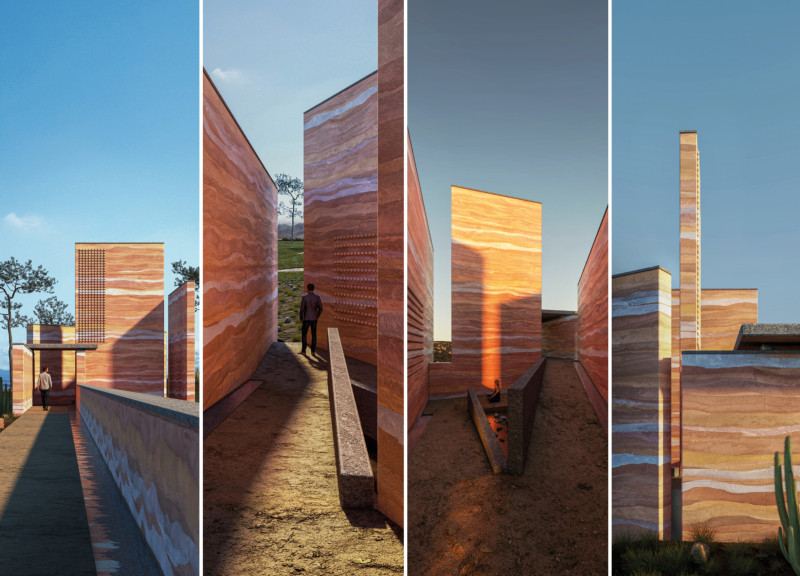5 key facts about this project
The design emphasizes the use of rammed earth as a primary material and integrates closely with its natural surroundings. The structure features a large monolith composed of three walls, showcasing the characteristics of earth while creating a strong visual presence. The approach highlights not only the material itself but also its connection to the landscape, inviting interaction with the environment.
Material Exploration
At the core of this design is the layering technique applied to rammed earth. This method allows for the variations in color, texture, and density to be visible. Each layer presents a unique aspect of the material, fostering a relationship between the structure and its geological context. The careful arrangement of these layers contributes to both aesthetics and stability, creating a thoughtful response to the site.
Water Interaction
Water is an important element in the design, flowing from the base of the monolith. This movement of water transforms the ground around it, mixing with earth to create a blend of mud. The interaction encourages people to engage with the space more intimately. As visitors approach the structure, the combined sensory experience of earth and water invites them to explore the relationship between natural and constructed elements.
Conceptual Ambiguity
The project prompts reflection on the boundaries between natural and artificial components. By highlighting this ambiguity, it raises questions about how raw materials are transformed into forms we can inhabit. The layering not only emphasizes the physical qualities of the materials involved but also suggests a narrative of time and change that resonates with the environment.
The monolith stands as a clear representation of the connection between earth and water. Its design goes beyond aesthetics, encouraging visitors to engage with the landscape and experience the natural elements in a meaningful way. The structure becomes an integral part of the environment, promoting a relationship that is both dynamic and enduring.



















































